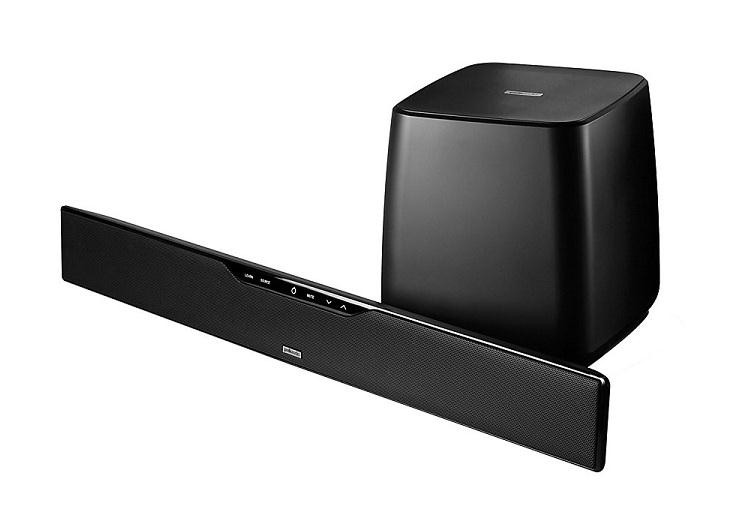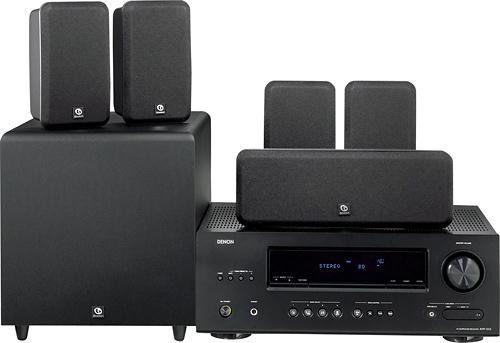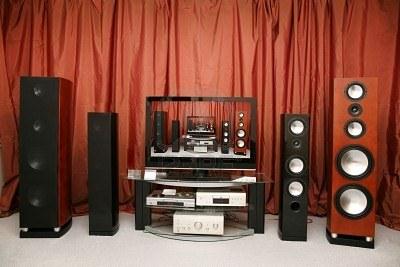
Pixels & Bits: Choosing the right path to audio enhancement
I considered several different topics for the inaugural Pixels & Bits article, but I settled on one that I think is an important part of every gaming experience; adding enhanced audio to your gaming system. Every day, gaming consoles become more integrated into the family entertainment hub, often serving on equal footing with the Cable or Satellite box when it comes to the hours of use. So it makes sense to discuss how to get best audio out of the games, movies and other content that come from your console instead of just relying on the TV speakers.
Even more important, there are many developers who view the game audio (dialogue, music, background noise, etc) as an equally important piece to the final product as the physics engine and the graphics quality. I personally am of the opinion that playing a game with enhanced audio makes it a better experience than just updated graphics alone. One example that I always come back to is multiplayer PvP gaming. A good audio system can be the difference between you hearing that guy creeping up behind your left shoulder getting ready to take you out or you identifying the threat and taking the appropriate action. Not to mention, better audio makes the games more fun and realistic.
This week we will explore the positives and negatives of the three main options for adding audio to your gaming rig over and above the TV speakers. Despite there being almost endless choices based on your budget and technical knowhow, the three most common ways to enhance your gaming audio are to add a standalone speaker bar, an all-in-one Home Theater in a Box (HTiB) or put together a separate component audio system. Each one has many pros and cons, so we will break it down to see which one may be the best fit to enhance your gaming experience.

What is it: A speaker bar is a single long and thin speaker that contains numerous drivers that can replace the entire front speaker ensemble in a surround system. They usually can be hooked directly to a source and bypass the need for expensive and bulky stereo receivers. The better speaker bars will be able to “create” rear surround as well and many come paired with, or have the option to purchase, a matching wireless subwoofer.
Gaming Impact: A speaker bar is a very easy and relatively inexpensive way to get better audio out of your games and consoles. They usually take an analog audio hookup (as well as digital input) direct form the source (console, cable box, TV, etc.) allowing you to bypass a receiver or amplifier. The benefit of this type of setup is that your game audio will be louder, cleaner and certainly better than any TV speaker. In addition, a bar will provide at a minimum, a front-surround audio experience that should translate to hearing the details in the game audio more distinctly that should allow audio clues help you play the games better.
Cons: Doesn’t always create a “true” sound field, lacks bass from main speaker bar
Final Analysis: A speaker bar is a great way to get louder sound and a front surround experience in just about any room. However, when considering speaker bars, keep in mind that companies whose primary focus is on audio gear tend to produce a higher quality product, many times in the same general price point as the competition. Unfortunately, a speaker bar on its own may have poor bass and audio on the higher end of the scale due to the use of multiple mid-range and tweeters, so adding a subwoofer to complement a speaker bar is almost a necessity in order to create a balanced sound field.
All-in-One Home Theater in a Box (HTiB)

What is it: An HTiB is normally a single box purchase that contains a head unit integrated with an AM/FM receiver, DVD/Blu-Ray player and amplifier. Also included are five equally sized speakers and a subwoofer (that usually is not powered) along with the speaker wires needed to hook it up.
Gaming Impact: This is a tough one for me, as investing in an HTiB can be tricky business because the performance of many of these all-in-one units does not justify the investment. For gamers, you will definitely hear things from the games audio while in any surround mode you wouldn’t with TV speakers, but the poor quality of the speakers and sub may not provide that extra enhancement that makes a game go from good to great. On the positive, enhancing the game audio based on your needs, even if it isn’t the ideal situation, can still pay dividends with a better experience so HTiBs do have a place in a gaming rig if it is in a dorm or bedroom.
Cons: Lack of inputs, Poor audio quality, Poor speaker construction, subwoofers are usually not powered, designed to work ONLY with what came in the box
Final Analysis: I am usually opposed to any and all HTiBs unless the box contains a separate receiver, quality speakers and powered subwoofer (normally coming at or above the $500 price point). However, there are certain situations where an HTiB makes sense, such as if the size of the area the stereo components need to go is restricted or someone wants a super easy hook up. But those cases are rare and usually this purchase is made solely based on budget. So be wary that when you buy an HTiB, there is a good chance that the money you invest will not bring you the necessary improvements in your audio that you are looking for unless you get at or above the $500 price points.
Separate Component Audio

What is it: Separate Components are distinct pieces of audio gear such as individual speakers, receiver or amplifier that are purchased individually and combined to form a complete home theater system. In order to get the most comprehensive sounding home theater, this should always be the preferred way to create a home theater audio system.
Gaming Impact: If you have the budget to “do it right”, than putting together a home theater that has separate components can pay off handsomely. The biggest advantage is that you will hear every aspect of the audio soundtrack that the game designers included. If you have are running separate component system with really good speakers that can mean the difference between hearing a noise in the background in Call of Duty versus identifying that someone is sneaking up behind you on the left side to try and stick a knife in your back. The better the quality, the better the overall game experience will be.
Cons: Most expensive route, can take up lots of real estate
Final Analysis: By now, it probably isn’t a secret that I think buying separate audio components is the best way to develop a home theater system to enhance your gaming experience. The benefits that you gain while playing the game are immense over the other types of audio. The single most important benefit to using separate components is that you will be able to experience the game audio the way the game designers intended. So anything that was put in the game will be heard.
Conclusions
After spending a significant portion of the last 20 years selling or consulting on home theatre gear, each of these three options has merit based on the specific needs of the purchaser. HTiB, while not the ideal setup, is definitely a fit for younger gamers without large bankrolls looking to get some audio in a bedroom or college dormitory. Speaker bars on the other hand are ideal for home offices, smaller gaming spaces and the bedroom, where they can provide upgraded audio and surround with minimal intrusion. The component audio set up, while it can be placed in any environment, is best suited for a family room, man cave or dedicated Home Theater/Gaming room. Although each system can be an option, your budget and needs should help determine which of these to choose to invest in when adding audio to your gaming system. The final piece of advice I would like to offer is this...do not buy any type of speaker system without listening to it first. Any salesperson can make a recommendation, but only your own ears can tell you whether you like the sound or not.
The opinion expressed in this article is solely that of the author and does not necessarily reflect those of GamingNexus as a whole. If you have questions, concerns or criticism, feel free to leave a comment for our staff.
* The product in this article was sent to us by the developer/company.

About Author
Like many gamers in their 40's, I developed my love of gaming from my Commodore 64 after we wore out our Intellivision. I spent countless hours wandering around the streets of Skara Brae, as my life was immersed in The Bard's Tale series on the C-64, D&D Titles and any/all Epyx titles (California Summer and Winter Games) and sports titles. After taking the early 90's off from gaming (college years) minus the occasional Bill Walsh College Football on Sega, I was re-introduced to PC games in the mid 1990's with a couple of little games called DOOM II and Diablo. I went all-in with the last generation of consoles, getting an Xbox 360 on launch weekend as well as adding a PS3 and Wii in subsequent years. I now am into the current-generation (latest?) of consoles with the WiiU and Xbox One. Recently, I was able to get back into PC gaming and have enjoyed it very much, spending most of my time going solo or playing with my fellow GamingNexus staffers in controlled multiplayer action.
While my byline is on many reviews, articles and countless news stories, I have a passion for and spent the last several years at GamingNexus focusing on audio & video and accessories as they relate to gaming. Having over 20 years of Home Theater consulting and sales under my belt, it is quite enjoyable to spend some of my time viewing gaming through the A/V perspective. While I haven't yet made it to one of the major gaming conventions (PAX or E3), I have represented GamingNexus at the Consumer Electronics Show (CES) in Las Vegas in nine of the last ten years.
Personally, I have been a staff member at GamingNexus since 2006 and am in my third tour of duty after taking off the last year and a half.

